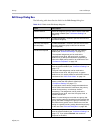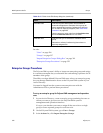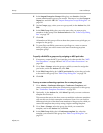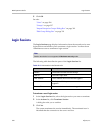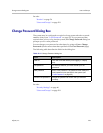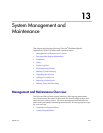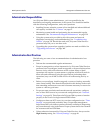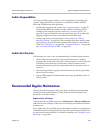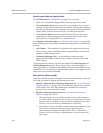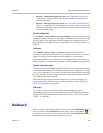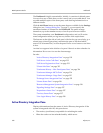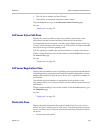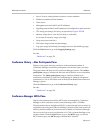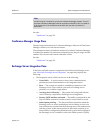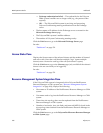
Recommended Regular Maintenance System Management and Maintenance
Polycom, Inc. 329
Auditor Responsibilities
As a Polycom DMA system auditor, you’re responsible for managing the
system’s logging and history retention. You should be familiar with the
following configurations and operations:
• Configuring logging for the system. See “Logging Settings” on page 70.
These settings affect the number and the contents of the log archives
available for download from the system. See “System Log Files” on
page 356. Polycom Global Services personnel may ask you to adjust the
logging configuration and/or download and send them logs.
• Configuring history retention levels for the system. See “History
Retention Settings” on page 261. These settings affect how much system
activity history is retained on the system and available for download as
CDRs. See “Call History” on page 384, “Conference History” on page 386,
and “Call Detail Records (CDRs)” on page 388.
Auditor Best Practices
The following are some of our recommendations for auditing best practices:
• Unless otherwise instructed by Polycom Global Services, configure
logging at the production level with a rolling frequency of every day and
a retention period of 60 days. If hard drive space becomes an issue,
decrease the retention period incrementally until the disk space issue is
resolved.
• Download log archives regularly and back them up securely (preferably
offsite as well as onsite).
• Export CDRs regularly and back them up securely (preferably offsite as
well as onsite).
Recommended Regular Maintenance
Perform the following tasks to keep your Polycom DMA system operating
trouble-free and at peak efficiency. These tasks can be done quickly and
should be run at least weekly.
Regular archive of backups
Log into the Polycom DMA system, go to Maintenance > Backup and Restore,
and check for new backups. If there are new backups, download and archive
the latest one.
Every night, the Polycom DMA system determines whether its configuration
or database data have changed since the last time it performed a backup. If so,
it creates a new backup instance. For details on backups, see “Backing Up and
Restoring” on page 360.



